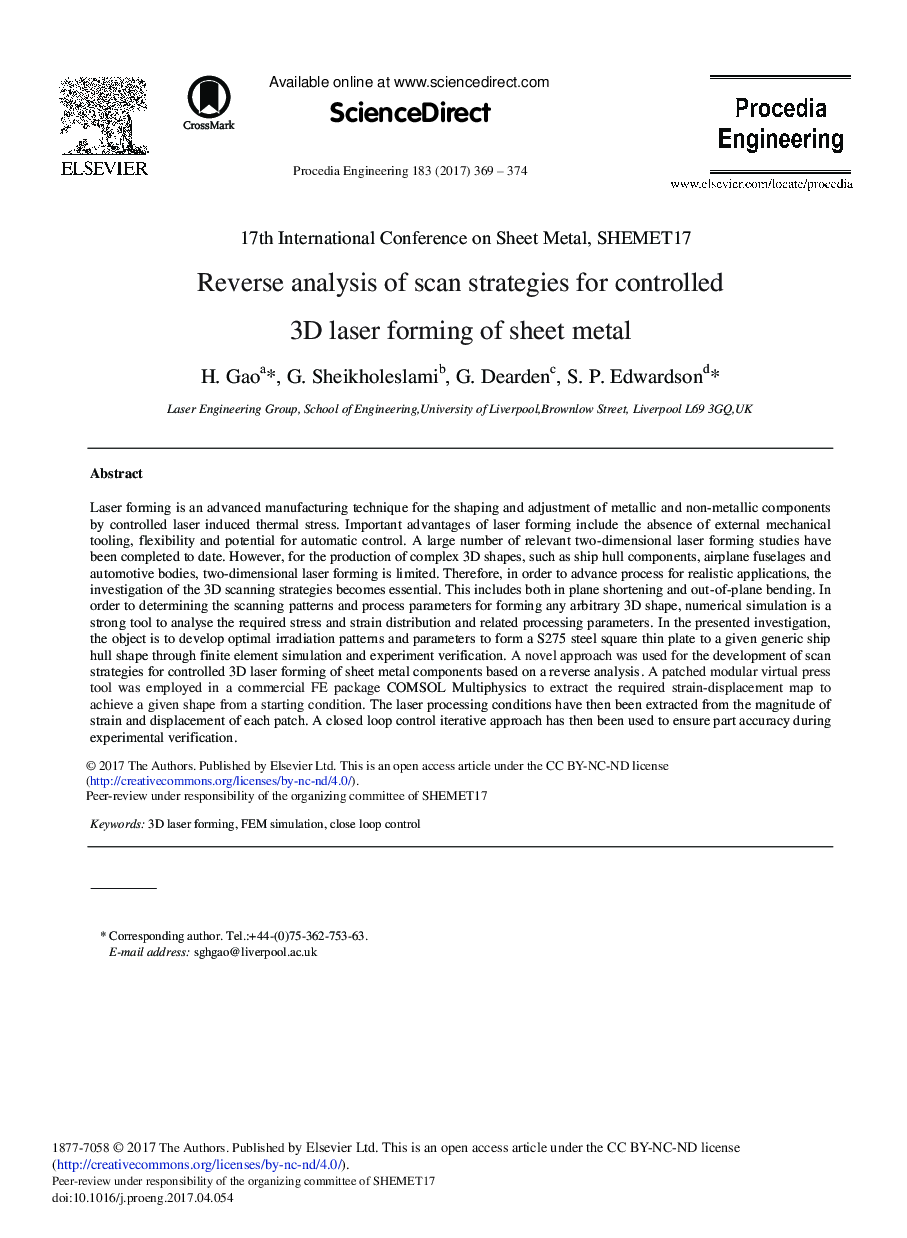| کد مقاله | کد نشریه | سال انتشار | مقاله انگلیسی | نسخه تمام متن |
|---|---|---|---|---|
| 5028006 | 1470643 | 2017 | 6 صفحه PDF | دانلود رایگان |

Laser forming is an advanced manufacturing technique for the shaping and adjustment of metallic and non-metallic components by controlled laser induced thermal stress. Important advantages of laser forming include the absence of external mechanical tooling, flexibility and potential for automatic control. A large number of relevant two-dimensional laser forming studies have been completed to date. However, for the production of complex 3D shapes, such as ship hull components, airplane fuselages and automotive bodies, two-dimensional laser forming is limited. Therefore, in order to advance process for realistic applications, the investigation of the 3D scanning strategies becomes essential. This includes both in plane shortening and out-of-plane bending. In order to determining the scanning patterns and process parameters for forming any arbitrary 3D shape, numerical simulation is a strong tool to analyse the required stress and strain distribution and related processing parameters. In the presented investigation, the object is to develop optimal irradiation patterns and parameters to form a S275 steel square thin plate to a given generic ship hull shape through finite element simulation and experiment verification. A novel approach was used for the development of scan strategies for controlled 3D laser forming of sheet metal components based on a reverse analysis. A patched modular virtual press tool was employed in a commercial FE package COMSOL Multiphysics to extract the required strain-displacement map to achieve a given shape from a starting condition. The laser processing conditions have then been extracted from the magnitude of strain and displacement of each patch. A closed loop control iterative approach has then been used to ensure part accuracy during experimental verification.
Journal: Procedia Engineering - Volume 183, 2017, Pages 369-374